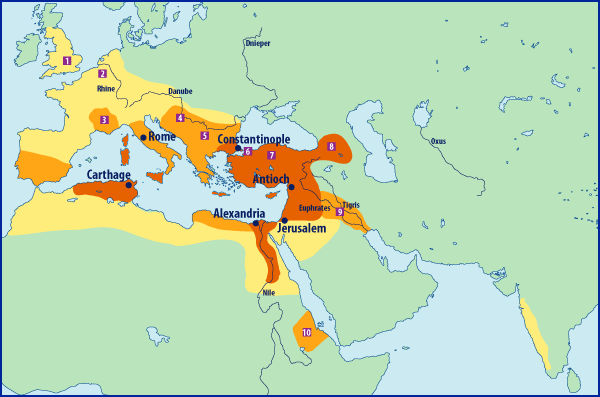Data

The issue of the origin and spread of Christianity in Europe is controversial. It usually focuses on the relative significance of two different views. Some historians claim that the conventional Christian view emphasizes the role of Jesus and his followers and overlooks the essential historical context in which Christianity arose (Cox and Thompson 44). Others argue that the perspective does not account for the spiritual importance of Jesus and his teachings and undermines faith’s role in spreading the religion throughout the continent (Cox and Thompson 44). Eventually, the discussion surrounding the origin will likely continue for many years as new proof and views emerge.
The first side, supporters of the traditional Christian view, state that Christianity originated in the European continent through the religion’s spread by Jesus Christ and his followers. Based on this view, Jesus was born in Bethlehem, raised in Nazareth, and conducted his ministry in the region of Galilee, which is in present-day Israel. After his death and resurrection, the followers spread the message worldwide, including in Europe. From a historical perspective, Christianity’s origin in Europe is viewed as a more complex and gradual process.
Based on this notion, religion was not introduced to the continent until after the death of Jesus and the apostles (Cox and Thompson 45). Rather, it was spread by missionaries, who traveled throughout the Roman Empire and beyond, converting individuals to the new faith. This took many centuries and was marked by significant cultural and political changes, including the conversion of the Roman Empire to Christianity in the 4th century CE (Cox and Thompson 46). The above information can be collected by interviewing several people in theology and conducting document analysis.
Reflection
The communicative goal for my data visualization was to inform the audience about historical and geographic patterns of Christian expansion and growth worldwide. This includes information such as the regions where the religion originated and spread from, a timeline of significant events and milestones in Christian history, and the current distribution of Christians worldwide (Olsen 275). The ultimate goal is to educate people on Christianity’s historical and modern spread and offer insights into the factors that have influenced its growth and decline over time.
I selected my topic randomly and used unstructured interviews with five European history teachers and document analysis for the research. When creating the graphic, there are numerous design principles to have in mind to guarantee that the visual is engaging, effective, and easy to comprehend. For instance, the graphic must be easy to read and understand, with a clear hierarchy of information that guides the viewer’s eye. Avoid clutter and unnecessary details that could distract from the main message. In case it is cluttered and hard to read, the audience may quickly lose interest and miss the intended message. By maintaining clarity and simplicity, the visual is more likely to communicate the data it conveys effectively.
The second design principle uses a consistent color scheme and style throughout the visual to establish a cohesive experience and typography. This aids in creating brand identity and reinforcing the message of the graphic. When a visual utilizes a consistent color scheme, typography, and style, it creates a sense of coherence and unity.
The third design principle is a visual hierarchy, which prioritizes information and guides the viewer’s eye through the graphic. This can be accomplished by utilizing size, spacing, color, and font-weight. While there are many essential design principles to have in mind when creating graphics, some may be less relevant or unnecessary, depending on the context. An example is ornamentation, where in some instances, adding decorative elements to a visual can be distracting. Whereas the design can be appealing, it may not always be relevant to the graphic’s message. Another is minimalism, where even though it can be effective for creating simple and uncluttered designs, it may not always be the best strategy for all types of graphics. Sometimes, a more complex or detailed design may be more appropriate.
References
Cox, Gerry R., and Neil Thompson. “Christianity.” Managing Death: International Perspectives. Cham: Springer International Publishing, 2022, p. 43-48. Web.
Olsen, Daniel H. “Religion, spirituality, and pilgrimage in a globalising world.” Handbook of Globalisation and Tourism. Edward Elgar Publishing, 2019, p. 270-284. Web.